Actions element
Edited by Tianhao Chen, s181284
Contents |
Abstract
In project management, the project canvas are an essential tool for managers to organize and to visualize all the elements. One of the elements named actions is always attached high importance in projects. Project actions are the process to achieve the project’s results by executing tasks, activities or work. [1]
Nowadays, the schedule and budget are the fundamental consideration for project management. Nevertheless, plenty of projects still fail to meet these targets, especially on money and time. The reasons for failure have often been blamed on poor project definition, incomplete information, poor productivity, inadequate communications, uncertainties around labor and material costs, and the failure to use timely and appropriate project management practices and controls.[2]The solution to these problems from the root is to manage these project actions.
This article mainly introduces what kind of things should be included into actions element in project management and how to make a good actions plan by introducing a template for general project. In addition, there is a example for the application of the template. Being focus on the actions and interventions enable the monitoring and smoothing of group process, improve cooperation and communication, as well as maintain the health of group dynamics.[3]
Actions element
This section mainly talks about what actions element is and why it is so important. Meanwhile, the organization of the actions element could be done by making actions plans. As a result, the quality of actions plan would directly influence the quality of this project management.
Project actions are tasks, activities or work that helps to achieve the project’s results. Actions are the completion of specific tasks within a defined period of time. They advance the project toward the desired result. An action can be split into minor activities depending on the level of detail of the Project Canvas. Actions are always best described by these verbs: create, provide, organize, test, produce. Actions are always the combination of a series of detailed verbs to clearly declaim the to-dos when the project is carried out.
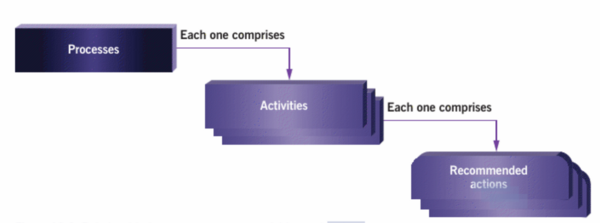
Actions plays a very vital role in the project management. The quality of action plan directly decides how the process of this project would be like. The absence of a clear action plan can lead to confusion or poor resource management, which may lead to project failure. Clearly defined actions make it easy to allocate the workload between the team members and keep the process under control. Actions are the process to produce these deliverable and the path to reflect the impacts of other elements. Without having a way to achieve these objectives, the initial planning that went into the first stages of the project may have been for nothing. Action planning could brings lots of advantages during the project working process. As we can see from this project canvas, actions are in the center place of this project planning structure. Lots of other element are highly influenced by actions element. The resource, monitoring, and risks are highly possible to change due to the little difference in actions for the projects. So actions element could be regarded as the most critical element in a project.
Planning Actions
The “Action” should accurately describe what needs to be done, how it should be executed, by whom and when. It is crucial to consider which resources are required to complete each action. Specific and measurable actions make it easier to monitor and control the project. At first, actions can be identified by focusing on the end result. The level of detail can then be increased after the establishment of initial action plan. Actions element varies a lot in different phases of a project. Normally there are five phases in a project, which are respectively Initial phase, Planning Phase, Definition Phase, Execution Phase and Evaluation Phase. Actions plan should be as detailed as it could be, so that the objectives could be very clear at any period of project to guarantee no confusion when it is undergoing.
All the following results of successful performance in different periods are also listed.
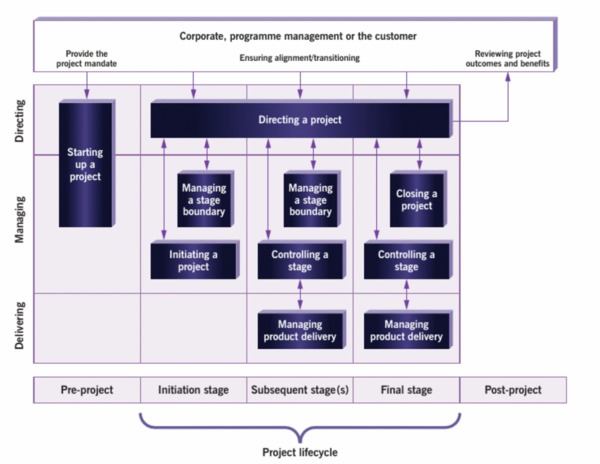
Actions in Initial Phase
1. Initial feasibility assessment
This action is to make description of the need from stakeholders and according to the need and possible cost to assess the feasibility.
2. Obtain authorization
This action is to arrange the manager for project based on the positive decision by sponsor then to establish the initial structure of management frame in this project.
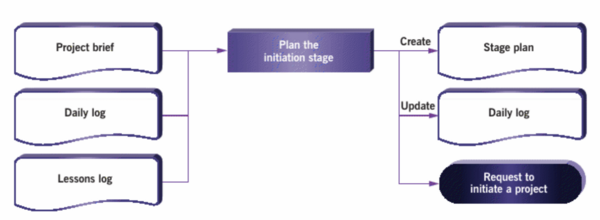
| Recommended Actions | Expected Results |
| Initial feasibility assessment | A document confirming that there is a need of the project deliverables and describing, in broad terms: the deliverables, means of creating the deliverables, costs of creating and implementing the deliverables, benefits to be obtained by implementing the deliverables. |
| Obtain authorization | • A “go/no go” decision is made by the sponsor
• A Project Manager is assigned • A “Project Charter” is created • A “go/no go” decision is made by the sponsor which authorizes the project manager to apply organizational resources to the activities of a particular phase •Written approval of the phase is created |
Actions in Planning Phase
1. Determination of project scope
This action is to set down the scope of this project.
2. Setting up the sequence of project activities
Sequence arrangement is a vital action in planning phase which could help improve the productivity and the effectiveness of other actions in this project and save the time cost to further reduce the money cost.
3. Listing required duration and resource for each activity
This action is to calculate the resource and duration needed in every specific activity to get the rough draft for the project plan and approximate amount of resource for advanced preparation. The correct information and priority measurement for every activities and accurate judgment is the essential result.
4. Schedule establishment
As the duration are determined in last action, here this action is to establish the project schedule. The concern here in this action are reasonable design rather than accuracy of date because project contains too much unknown factors when it is under execution in the reality. The reasonable design could make the project more smooth and avoid unnecessary waste of resource.
5. Budget estimation and spending plan
As the resource for each activity is settled in previous action, this action is to transfer these statistic of resource into the specific money for the budget. At the same time, comparation between the budget estimation and acceptable budget should be done as well. The vital thing of this action is the proper distribution of cost to make every coin spent meaningful.
6. Organization of staff and Communication plan
As long as these activities planning action is finished, manager is supposed to start organizing people who participate in these activities and actions and to build the communication net among these staff who have collaboration with each other. The main concern in this action are the simple and transparent structure which could make the communication more directly.
7. Risk identification and responding measurements
Risk identification is a very important action which asks manager to have considerate preparation for these unpredictable but possible risks to the project operation. The concerns here are the correct assumption for the risks including the possibility of risks, the corresponding cost on the responding and the effects on the settled plan.
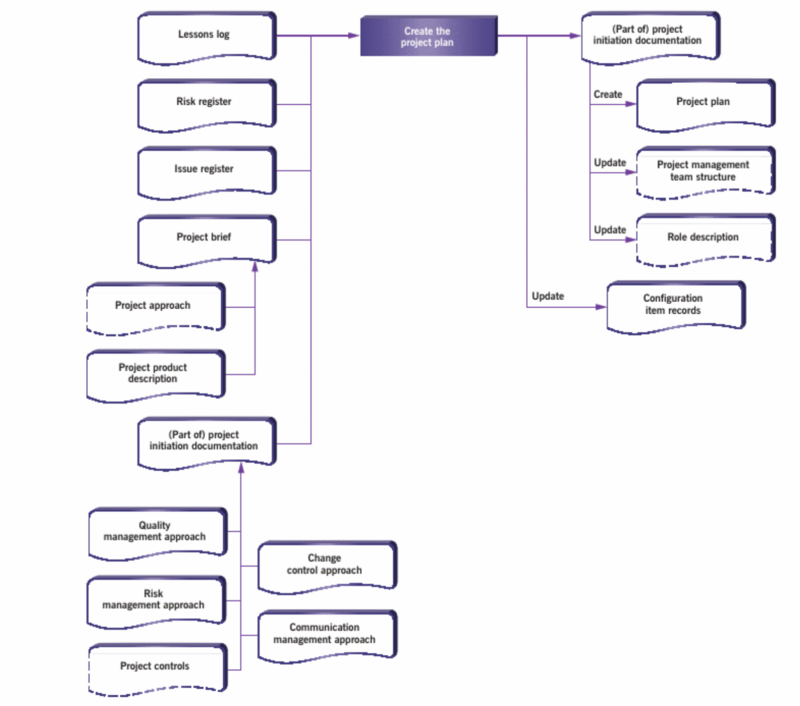
| Recommended Actions | Expected Results |
| 1. Determination of project scope | • Statement of Project Scope
• Scope Management plan • Work Breakdown Structure |
| 2. Setting up the sequence of project activities | • An activity list (all activities that will be performed)
• Updates to the work breakdown structure (WBS) |
| 3. Listing required duration and resource for each activity | • Estimate of durations (Time required) for each activity and assumptions related to each estimate
• Statement of resource requirements |
| 4. Schedule establishment | • Project schedule in the form of network diagrams, milestones and supporting details such as resource usage over time, order/delivery schedules etc. |
| 5. Budget estimation and spending plan | • Cost estimates for completing each activity
• Supporting detail, including assumptions and constraints • Cost management plan describing how cost variances will be handled • A cost baseline or time-phased budget for measuring/monitoring costs • A spending plan, telling how much will be spent on what resources at what time |
| 6. Organization of staff and Communication plan | • A communication management plan including:
• Collection structure & distribution structure • Schedules listing when information will be produced |
| 7. Schedule establishment | • Role and responsibility assignments
• Staffing Plan & Project Staff • A document describing potential risks, including their sources, symptoms, and ways to address them |
Actions in Definition Phase
Execution of project activities
In this phase, the deliverables are supposed to be created and change of the project situation should be identified[1]. At the same time, the progress in different periods and group performance must be recorded by the responsibility. And the response to change and the way of reducing the effects of change on other following or undergoing activities.
Results of Successful Performance:[2]
• Work results (Deliverables) are created
• Change requests (i.e., based on expanded or contracted project) are identified
• Periodic progress reports are created
• Team performance is assessed, guided, and improved if needed
• Contracts are administered to achieve desired work results
Actions in Execution Phase
Control project activities
Updating the project plan and scope is the main thing in this action. Meanwhile, corrections and adjustment should be done on those finished work by following up with the late update. Important elements of this action are mainly the way to insert these correction into the original plan smoothly.
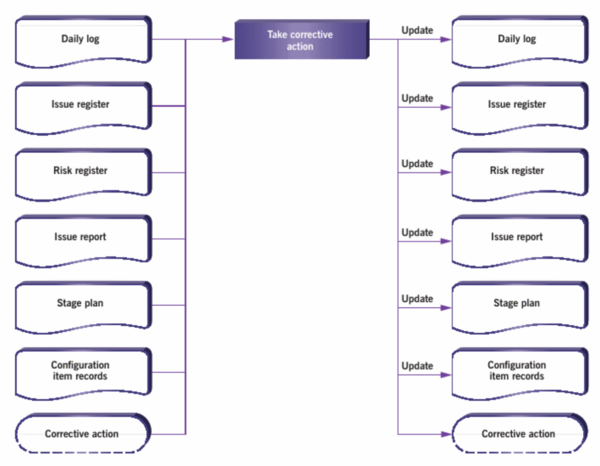
Results of successful performance:[2]
• Updates to project plan and scope
• Corrective actions such as rework of deliverables, adjustments to work process etc.
• List of lessons learned
• Improved Quality
• Decision to accept inspected deliverables
Actions in Evaluation Phase
Close out project activities
Closing out of project is the action between the time when deliverables are all created and the time when hand-off work of project manager is all finished. The most important elements of this action are the responsibility transferring and final inspection to guarantee the project is well-finished.
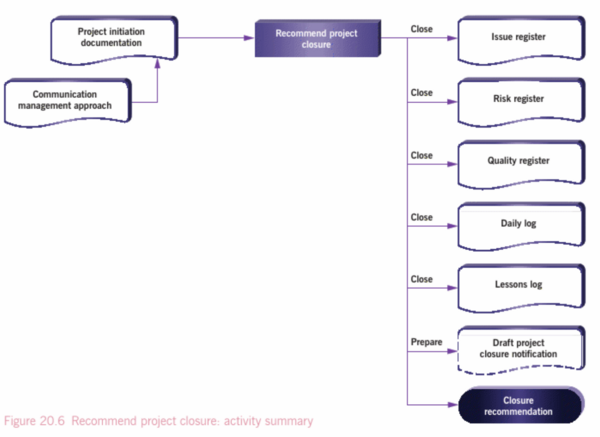
Results of Successful Performance:[2]
• Formal acceptance, documented in writing, that the sponsor has accepted the output of this phase of activity
• Formal acceptance of contractor work and all updates to the contractor’s files
• Updated project records prepared for archiving
• A plan for follow-up and/or hand-off of work
Examples of Application on Actions Plan
In last section, we get the detailed description on planning actions. Here we are going to try to apply it into our real life by these daily things to get a more clear understanding on how to make actions plans.
Example : Cleaning your house
Initial Phase: There are two actions need to be settled after you have the thought of cleaning your house.
First one is the feasibility assessment. Then you need to check with yourself or your family 'Do you have enough cleaning tools? Do you have time for the cleaning activities? Do you have the ability of cleaning and using all these tools? After quick checking of these necessary things, feasibility assessment is finished. Second one as we said in 3.1 is to get the authorization. Here in this case, you are your own sponsor and manager. Hence if you get determined to clean your house in your mind, it could be regarded as authorization obtained. If you are hired to clean others' houses, for sure you need the authorization from the owner or the one who employee you. Basically, when you get this thought after consideration on the feasibility and make the decision to clean it in your mind, it means that you finish your initial pahse.
Planning Phase: During planning phase, your need to put all details of this project into consideration to make the execution of these cleaning activities could be done step by step.
First one is project scope determination. You are supposed to set the deliverables like cleaning areas, how clean it should be, limitation of time and so on. The situation of this house after cleaning is imagined by you in your mind. Then all the activities should be listed, and make a sequence for them. Assuming that there are three floors in your house and 5 rooms, it is very important to consider that where should be the first place to be cleaned and how to make the work most efficient and least repeated. So you may start from the top floor and the room in the end of hallway, then mopping out and downstairs. Later on, the duration and necessary tools should be listed. how long would each activities would be and check all the necessary cleaners to decides whether the shopping activity need to be added into list. Then put all the activities into schedule. For some special circumstance, it may contains more actions in the planning phase. If you are not cleaning it alone, you may need to establish the communication and organization with others to divide the cleaning areas or cleaning activities. In addition, it is also very important to consider the potential risks which is possible to occur in cleaning. For examples, when mopping the stairs, you may fall down due to the cleaned slippery floor. Also these tools possibly get broken due to the wrong use or other reasons. In order to responds to these situations, you could be careful to slippery floor and prepare the spare tools in case that they get broken.
Definition Phase: Actually due to very simple relationship between sponsor and manager in the cleaning house project, the deliverables may not changes too much and progress reports are very unnecessary here.
Basically, the only action is to start the project and make the planned cleaning under execution,.
Execution Phase: After the cleaning starts, if you are not in cleaning and just a manager of this project, then you need to control it to guarantee cleaning is under well going.
As we all know, the situation of project keeps changing. The sequence may need to be changed if there are some problems. For example, there are 5 people cleaning this house and may be someone finish the work in advance, then you can rearrange the activities to get the work most efficient. The most important thing for manager here is to be flexible on the default plan and make the change when something unexpected comes up.
Evaluation Phase: Normally the closing out action should be after the deliverables are all created and before the hand-off work is all finished.
But in this example, the hand-off work does not exist. Hence, when all the work is done, manager checks all the room, floors and other things in this house whether they are clean enough and up to the requirement. That's all the closing out action.
Limitation
This article mainly talks about the actions element in the aspect of making actions plan in different phases of project. It is obvious that the actions are not fixed for every specific project. The provided actions could be regarded as a template for a manager considering based on these actions but not only on these recommended actions. Project management is a very flexible work, changes happens everywhere and every second in the project. As a project manager, how to changes the plan is a very important ability.
What's more, actions element is from the project canvas, there are also lots of other elements in the canvas. Actions is related to other elements such as resource, cost and so on. Not only the actions plan would be made, but also the plans of other elements. In order to become a good project manager, all elements are supposed to be under consideration rather than just focus on the actions.
Annotated bibliography
- Project Management: "Uppal, K. B. (2008). Project management, cost engineering, project definition, action plans or what? Aace International Transactions, PM.01 (11 pp.), PM.01 (11 pp.)."; 2008: This conference paper mainly illustrates how the actions plan should be established and the way to identify the success the each action in different phases. The author consider the action plan mainly in the aspect of cost engineering with the combination of project definition.
- Project Management: "Managing Successful Projects with PRINCE2"; 2017: PRINCE 2(PRoject IN Controlled Environment) is a very famous and useful book in the field of project management. PRINCE2 is based on experiences of European project managements and project teams, who have contributed, some from their successes and others from their mistakes and omissions. This process driven book illustrates all kinds of project elements from different phases in a project. For the actions part, it gives very detailed description on the process controlling and tries to cover as much as the possible condition it could be.
Reference
- ↑ http://www.doing-projects.org/resources/projectcanvas;2015
- ↑ 2.0 2.1 2.2 2.3 2.4 2.5 Project Management: "Uppal, K. B. (2008). Project management, cost engineering, project definition, action plans or what? Aace International Transactions, PM.01 (11 pp.), PM.01 (11 pp.)."; 2008
- ↑ Rui Cao, Kong Bieng Chuah, Yiu Chung Chau, Kar Fai Kwong, Mo Yin Law, (2012) "The role of facilitators in project action learning implementation", The Learning Organization, Vol. 19 Issue: 5, pp.414-427, https:// doi.org/10.1108/09696471211239712;2012
- ↑ 4.0 4.1 4.2 4.3 4.4 4.5 Project Management: "Managing Successful Projects with PRINCE2"; 2017